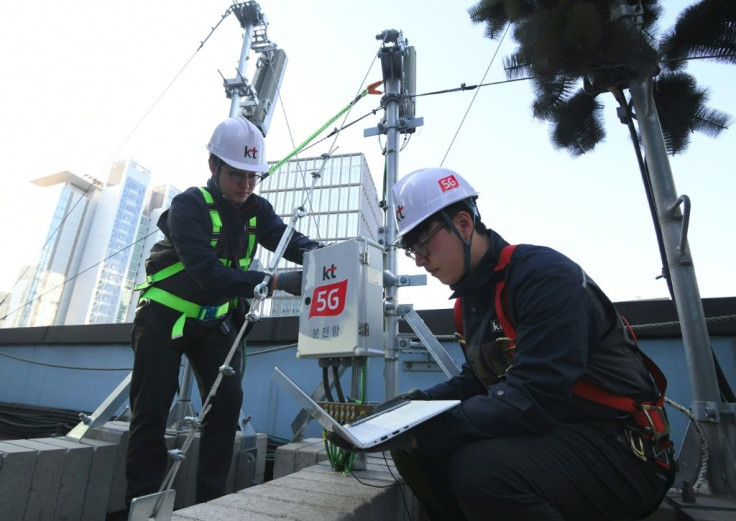As 5G Approaches, What About 6G? Researchers Working On The Next Next-Gen Network
Major carriers are prepping for 5G networks as compatible smartphones approach release and the infrastructure is built around the globe to bring the technology to the masses. However, even as this next-generation cell network readies for its time in the mainstream, researchers in Europe are laying the foundation for what comes next.
Researchers at the Institute of Applied Electrodynamics and Telecommunications at Lithuania’s Vilnius University said in a press release they are conducting research into terahertz waves, the technology many presume eventually will form the basis for 6G networks. Led by Professors Jonas Matukas and Alvydas Lisauskas, the institute helped with breakthroughs in 4G and 5G networks.
“5G has significantly raised our expectations of what to expect in the future, with smart cities and autonomous cars being just the tip of the iceberg,” Kęstutis Ikamas, leader of the terahertz research project, said. “The sixth-gen will take the ideas of new age tech one step further: for starters, by introducing substantial computational capacity and enabling brand new applications for artificial intelligence.”
In basic terms, the lower the wavelength of the electromagnetic waves used in cellular networks, the more data they are able to transmit. Currently, 5G networks utilize millimeter waves, with wavelengths of 1-10 millimeters and frequencies of 30-300 gigahertz. At the high end, these 5G waves could give download speeds of up to 10 gigabits per second, capable of high-quality streaming and instantaneous smart device communication.
Terahertz wave technology applies the same principle of the shortening wavelengths and increasing frequency to achieve greater data transfer speeds. These waves occupy the 300-3,000 GHz band of the electromagnetic spectrum, offering potential speeds that are beyond imagination.
The future 5G-to-6G transfer will allow for even further developments in smart cities, autonomous cars, and augmented and virtual reality programs, things 5G already is furthering.
Experts say terahertz-based 6G will help correct some of the flaws inherent in 5G networks though precisely what these flaws are remain to be seen. Since 5G has not been widely implemented, many of its operational shortcomings are unclear.
However, one area that terahertz waves are unlikely to help solve is the range of usability. With short wavelengths, 5G waves are not capable of moving as far or through as much material as older networks. With even shorter wavelengths, terahertz waves are more limited.
During a talk at the Brooklyn 5G Summit in 2019, TU Dresden Professor Gerhard Fettweis said during tests, terahertz waves were able to deliver terabit-per-second download speeds at a range of only 20 meters, or less than a third of the length of an American football field. On the other hand, 5G has a range of only 300-500 meters from a tower, while 4G LTE networks, widely available in commercial products since around 2009, boast a range of 10 miles with 100-megabit-per-second speeds.
The problems with 5G and 6G ranges are compounded by the dense buildings in city environments blocking their signals. For these technologies to be viable in such settings, current technology requires a whole network of 5G towers in close proximity to one another, calling the short-term viability of smart cities and autonomous cars into question.
Whether or not networks are available outside major cities, 5G is expected to approach mainstream exposure in 2020, with the release of more compatible smartphones. Qualcomm President Cristiano Amon estimates around 200 million 5G phones will ship by the end of the year.
There is currently no solid notion of when 6G will be available commercially -- or even if it will be viable. In the past, generational changeovers in cell networks have generally come every decade, so some estimates put the rise of 6G around 2030.

© Copyright IBTimes 2024. All rights reserved.





















